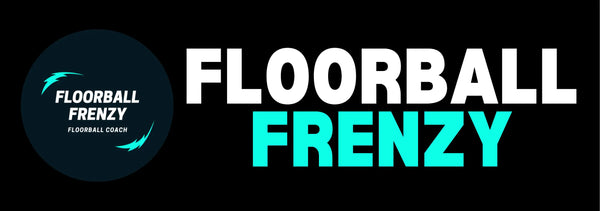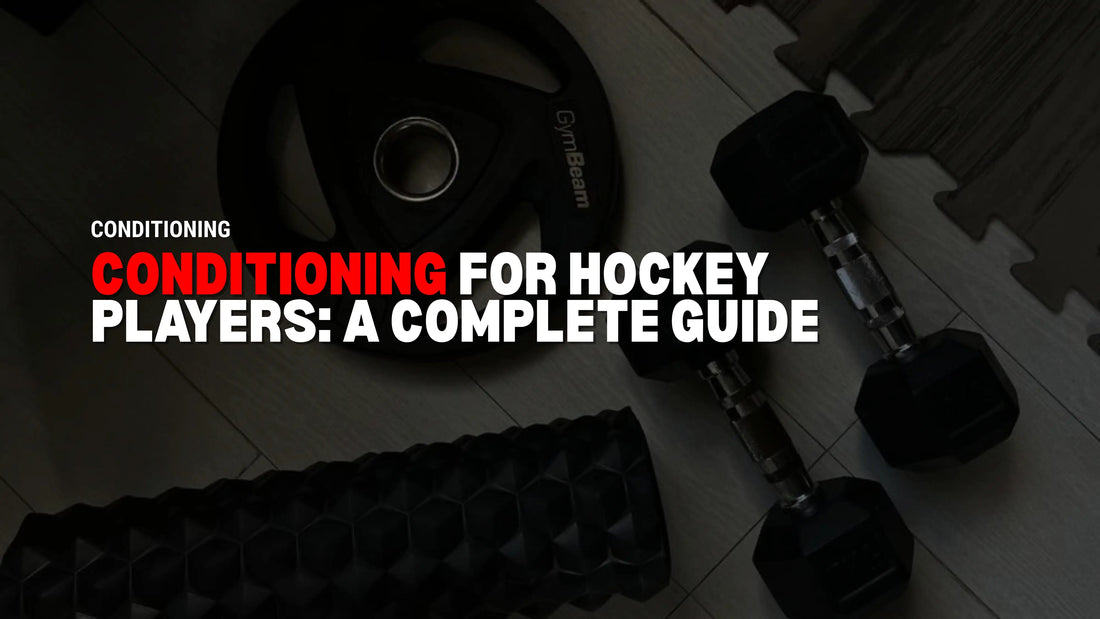As floorball gets faster and more skilled, the physical demands on players have never been higher.
The modern game demands that every player is not just technically sharp, but also an elite mover – quick first steps, repeat sprints, and the ability to recover instantly.
And while many players put in hours working on their stick skills and improving their shot power, we continue to see one thing holding them back from true performance: conditioning.
Elite coaches know that games are often decided late in shifts.
That’s when turnovers happen, defenders slow down, and mental mistakes increase.
And while coaches design plays to exploit these tired moments, the players who are best conditioned are the ones who capitalize on them.
✅ Want to win races and beat defenders wide? Build better conditioning.
✅ Want to win more 1v1 battles and stay dangerous all game? Outlast opponents with conditioning.
✅ Want more playing time in big moments? Coaches trust the fittest players.
That’s why we created this guide. Not just so you “pass a beep test,” but so you dominate where it matters most – on the court.
Part 1: Why Conditioning Matters in Floorball
When your conditioning drops, everything else follows.
- Stride mechanics go first. Those explosive first three steps suddenly feel heavy and slow.
- Battle level fades. Suddenly, you’re losing 50/50 duels you’d normally win.
- Mistakes creep in. Fatigue kills decision-making, positioning, and passing accuracy.
- Elite conditioning gives you:
- Endurance to keep sprinting and shooting into the third period
- Mental sharpness when others are tired and making mistakes
- Faster recovery between shifts and games
- Reduced injury risk by maintaining good mechanics even under fatigue
Players who can keep their speed and decision-making late in games look like they’ve found another gear. That’s not luck. That’s intentional conditioning work.
Part 2: Understanding Energy Systems in Floorball
Floorball isn’t steady cardio – it’s constant sprints, battles, and transitions. To train properly, we need to know which energy systems matter most:
1. Anaerobic Phosphocreatine System (The Burst)
- Fuels first steps, explosive shots, and quick changes of direction.
- Duration: 0–10 seconds
- Example: Winning a sprint for a loose ball or exploding into a break.
2. Glycolytic System (The Battle)
- Fuels extended high-intensity efforts (20–90 seconds).
- Duration: Up to ~2 minutes.
- Example: Long possession battles, defending back-to-back plays.
3. Aerobic System (The Engine)
- Fuels overall endurance and recovery between shifts.
- Duration: 2+ minutes, steady work.
- Example: Staying fresh late in a tournament game, bouncing back faster between shifts.
A single floorball shift often uses all three:
- Burst into play (phosphocreatine) → battle in the corner (glycolytic) → recover on the bench (aerobic).
That’s why conditioning needs to train all three systems.
Part 3: Why Jogging Isn’t Enough
A lot of players say: “I run a few times a week.”
But here’s the truth – jogging only trains your aerobic system.
Floorball is explosive, multi-directional, and played at intervals.
That means steady-state running won’t prepare you for game demands.
Instead, you need hockey-style intervals adapted to floorball:
- Short, sharp sprints (to mimic accelerations)
- Incomplete rests (like short time on the bench)
- Multi-directional movements (to simulate cutting and defensive shifts)
The goal isn’t just being “fit.” It’s being in floorball shape.
Part 4: Training Modalities for Floorball Conditioning
Different tools can build conditioning. Here’s what works best for floorball:
- Field/Court Sprints → Best transfer to floorball (multi-directional, explosive).
- Treadmill → Controlled pace & incline; good if you don’t have space.
- Bike → Low impact, but overused. Use sparingly to avoid hip tightness.
- HIIT Circuits (Bodyweight/DB/Kettlebells) → Great when space or equipment is limited.
- On-Court Conditioning → The gold standard. Nothing beats conditioning while actually playing.
Part 5: Conditioning Workouts for Floorball Players
Here are some savage but effective options (adapted from pro conditioning systems):
Workout 1: Penn 60s (Explosive Sprints)
- Sprint 5m out and back, 10m out and back, 15m out and back.
- Goal: Finish in under 20s.
- Rest: 60s.
- Reps: 5.
Workout 2: 10-20-30 Ladder
- Sprint 10m & back, 20m & back, 30m & back.
- Rest: 60s.
- Reps: 5.
Workout 3: 300s
- 25m shuttle x6 (300m total).
- Goal: ~60s.
- Rest: 90s.
- Reps: 3.
Workout 4: HIIT Tabata (Court Version)
- 20s max-effort (lunges, pushups, lateral shuffles).
- 10s rest.
- Cycle through 4–6 movements.
- Repeat circuit 3–4 times.
Part 6: Nasal Breathing for Better Recovery
Elite players recover faster between shifts. One secret? Nasal breathing.
- Improves oxygen efficiency
- Increases recovery speed
- Helps calm the body faster
Try this: after an intense rep or shift, switch back to deep nasal inhales and exhales as soon as possible. You’ll recover quicker and be ready for the next play.
Conclusion: Conditioning Wins Games
At FloorballFrenzy, we believe conditioning is one of the biggest separators between good and great players.
Players with elite conditioning don’t just last longer – they make better decisions, recover faster, and dominate when it matters most.
If you want to take your floorball game to the next level, don’t just focus on shooting harder or moving faster – build the engine that powers everything.
🔥 Train harder. Recover faster. Play smarter. That’s how you win in floorball.
Want extra tools to fuel your conditioning?
When you grab any product from FloorballFrenzy.com, you’ll also receive:
- BONUS: Mobility & Stretching Guide for Floorball – stay loose and fresh while building your engine.
- BONUS #2: Travel Workouts for Floorball Players – conditioning sessions you can do anywhere, no excuses.
- BONUS #3: Game-Day Nutrition Blueprint – fuel your body so your conditioning work shows up when it matters most.
These guides were built to make sure your conditioning training turns directly into game-day dominance.

